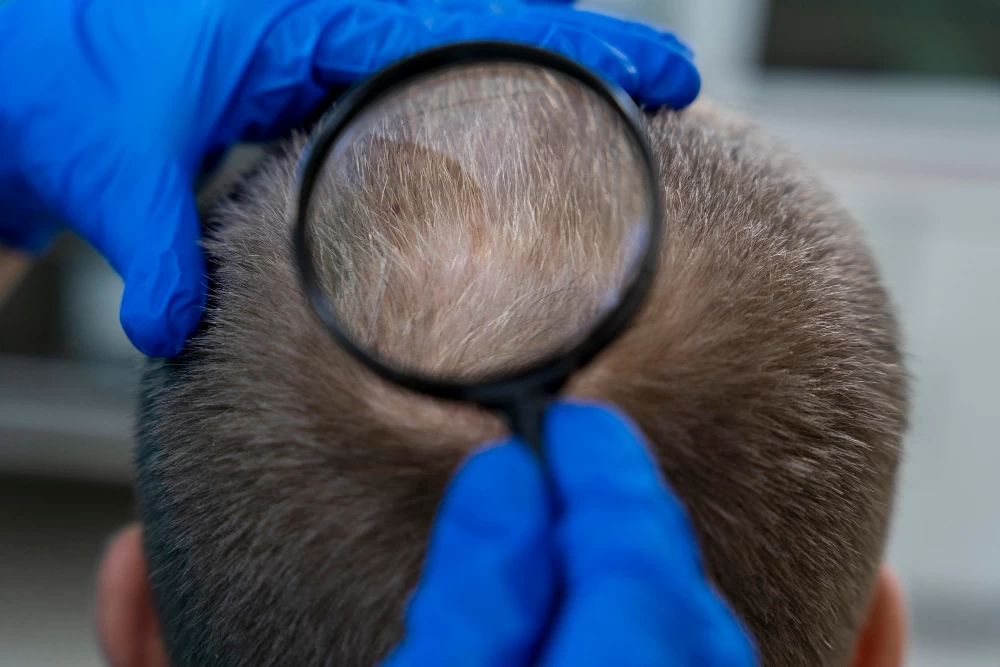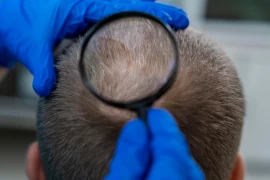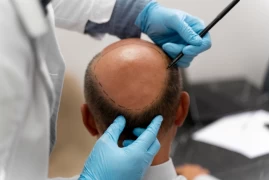
FUE Technique for Hair Transplantation
- FUE Technique for Hair Transplantation
- What are the Advantages of FUE Technique for Hair Transplantation?
- Is There Pain During Hair Transplantation with FUE Technique?
- What is the Resting Period After Hair Transplantation?
- Will There be Visible Scarring on the Back of the Head After Hair Transplantation with the FUE Technique?
- Does Hair Transplantation with the FUE Technique Provide Perfect Results in a Single Session?
Follicular Unit Extraction (FUE) is a modern hair transplant technique. It is a more advanced method compared to traditional hair transplant techniques and aims to achieve more natural results. The FUE technique involves the individual extraction of hair follicles and their transplantation.
The FUE technique is typically performed under local anesthesia. Individual hair follicles are extracted from the donor area on the scalp (usually the back and sides of the head). This process is carried out using microsurgical tools and specialized needles. The extracted hair follicles are then implanted into areas with thinning or no hair.
What are the Advantages of FUE Technique for Hair Transplantation?
The FUE technique has several advantages over other hair transplantation methods. These include:
- Minimal invasiveness: Compared to traditional hair transplant techniques, the FUE technique is less invasive. Since hair follicles are individually extracted, it does not require a large incision or stitches. This speeds up the healing process and leaves fewer visible scars.
- Natural appearance: The FUE technique provides a more natural appearance due to the individual extraction of hair follicles. The hair follicles are implanted according to their original growth angle and pattern, resulting in more realistic results.
- Less discomfort: The FUE technique causes less discomfort for the patient. There is minimal pain or discomfort during the procedure, and the recovery process is generally faster.
- Recovery process: The FUE technique offers a faster recovery process. Small scabs may form in the area where the hair follicles were extracted, but these typically disappear within a few days. After the healing process is complete, the transplanted hair starts to grow naturally.
The FUE technique is an effective hair transplantation method for suitable candidates. However, it may not be suitable for everyone, and results can vary in each case. Therefore, when considering hair transplantation, it is important to consult with a hair transplant specialist to determine the most suitable method for you.
Is There Pain During Hair Transplantation with FUE Technique?
During hair transplantation with the Follicular Unit Extraction (FUE) technique, there may be minimal discomfort, but usually, the pain is described as minimal or mild. Local anesthesia is used to minimize pain during the procedure.
Local anesthesia numbs the scalp, preventing the sensation of pain during the hair transplantation procedure. Anesthesia injections with needles may be associated with a small pinching sensation, but it is generally tolerable. After the anesthesia injections, the scalp becomes numb, reducing the sensation of pain during the procedure.
What is the Resting Period After Hair Transplantation?
How Long is the Resting Period After Hair Transplantation?
After hair transplantation with the FUE (Follicular Unit Extraction) method, a few days of rest are generally recommended. However, the complete healing process and resting period can vary from person to person and depend on several factors. Here is a general guideline for the resting period after FUE hair transplantation:
- First few days: Rest is important for the first few days after hair transplantation. Crusting, redness, or mild swelling may occur in the transplanted area during the post-procedure period. Resting allows the crusts to fall off and the skin to start healing.
- Returning to work: The time to return to work depends on the type of job and the activities involved. Many people can return to work after a few days of rest following hair transplantation. However, in some cases, if the job involves physical exertion or stress, a longer resting period may be required. You can determine the most suitable time to return to work by consulting with your specialist.
- Exercise and sports activities: It is important to avoid heavy exercise or sports activities for a while after hair transplantation. These activities can increase blood circulation in the area where the hair follicles are placed and can affect the healing process. You can determine the time to start exercising again based on your specialist's recommendations.
- Healing process: The complete healing process after hair transplantation can vary from a few weeks to several months. During the first few weeks, the hair follicles settle in, and some shedding may occur. New hair growth typically begins within the first three to six months and can continue for up to a year. You can get more detailed information about the healing process from your specialist.
The resting period after hair transplantation can vary depending on the complexity of the procedure, your personal healing speed, and the area affected by the procedure.
Will There be Visible Scarring on the Back of the Head After Hair Transplantation with the FUE Technique?
After hair transplantation with the FUE (Follicular Unit Extraction) technique, minimal scars can form on the back of the head. However, these scars generally become invisible and are concealed by the surrounding hair. The formation of scars can vary depending on the skill of the specialist, the techniques used, and your personal healing process. Your specialist can provide more specific information on how the scars will appear after the procedure.
Does Hair Transplantation with the FUE Technique Provide Perfect Results in a Single Session?
Hair transplantation performed with the FUE (Follicular Unit Extraction) method generally provides excellent results in a single session. However, this depends on several factors and can vary depending on each individual's circumstances.
To achieve perfect results, it is important to consider some factors:
- Quality and density of the donor area: The quality and density of the donor area from which hair is extracted are significant factors that can affect the outcome of the operation. Having sufficient and healthy hair follicles for transplantation increases the success of the procedure.
- Experience and skill of the hair transplant specialist: One of the factors that greatly affects the outcome of the hair transplantation operation is the experience and skill of the specialist. An experienced specialist increases the chances of achieving natural and aesthetic results by working with the correct angle and depth.
- Hair transplantation planning: Planning done before the hair transplantation operation is of great importance. Factors such as designing the hairline, determining the areas where hair follicles will be placed, and distributing the hair density evenly should be taken into account. Good planning helps in achieving excellent results.
- Healing process: The healing process after hair transplantation is important. It may take time for the hair follicles to settle and for new hair growth to begin. Monitoring the healing process and following the specialist's instructions correctly are important factors that can affect the outcome of the operation.
It should be noted that achieving the desired results from hair transplantation may take some time. The growth of new hair and reaching the desired density can take time. Patience and proper care are important.




